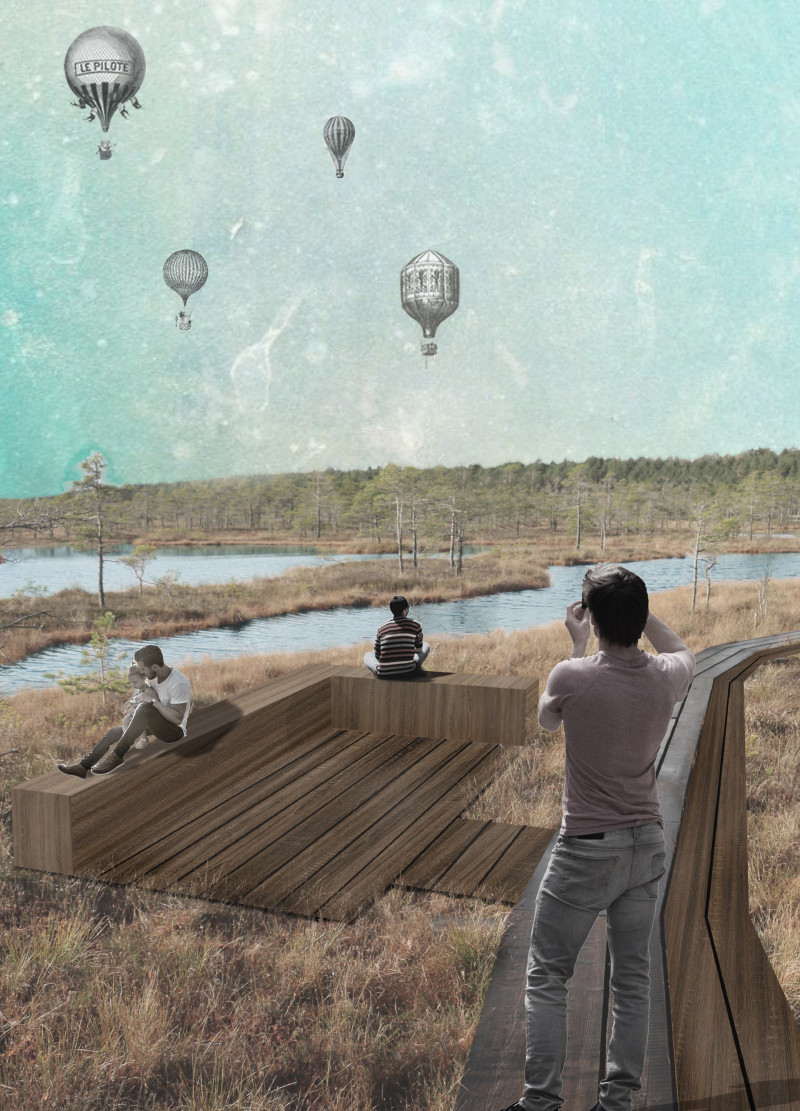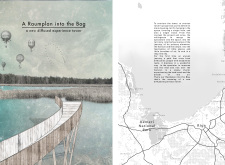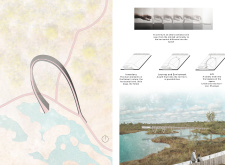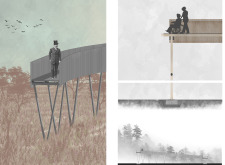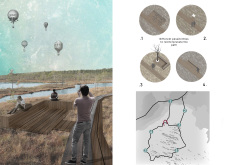5 key facts about this project
## Overview
Located in Kemeri National Park, Latvia, the project "A Raumpan into the Bog" explores the intersection of architecture and natural landscapes. The design deviates from typical vertical structures, opting instead for a low-slung, horizontal configuration that invites visitors to engage with the surrounding environment in a dynamic manner. With an emphasis on accessibility and inclusivity, the project aims to enhance users' experiences while fostering a deeper connection with the bog ecosystem.
### Spatial and Material Composition
The spatial organization is characterized by a serpentine pathway that mimics the natural flow of the marshlands, guiding visitors through varying elevations and allowing for unique viewpoints. The pathway design features a gentle slope of 5% to accommodate users of diverse mobility levels, ensuring equitable access to the scenic landscape. Along this route, strategically placed viewing platforms enable moments of pause and reflection, enriching the sensory experience with the diverse sounds, visuals, and textures of the area.
In terms of materiality, the project utilizes locally sourced wood, steel, and glass. Wood serves as the primary material, offering a warm, inviting aesthetic while integrating seamlessly with the landscape. Steel provides structural support with minimal visual impact, and glass enhances user interaction with the environment by framing views that change with seasonal variations. This careful selection of materials not only complements the ecological context but also reinforces the project's commitment to sustainability and environmental integration.


